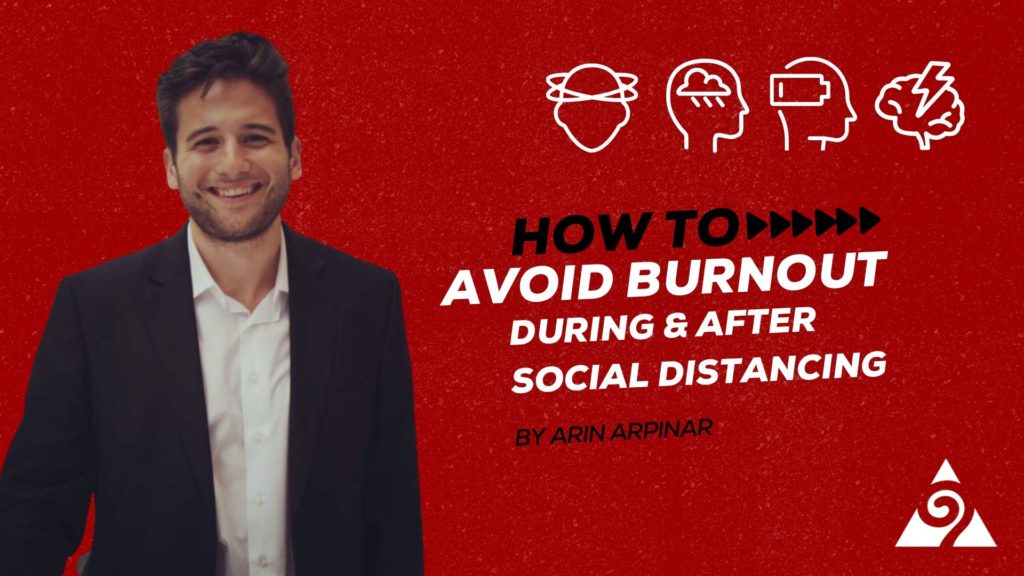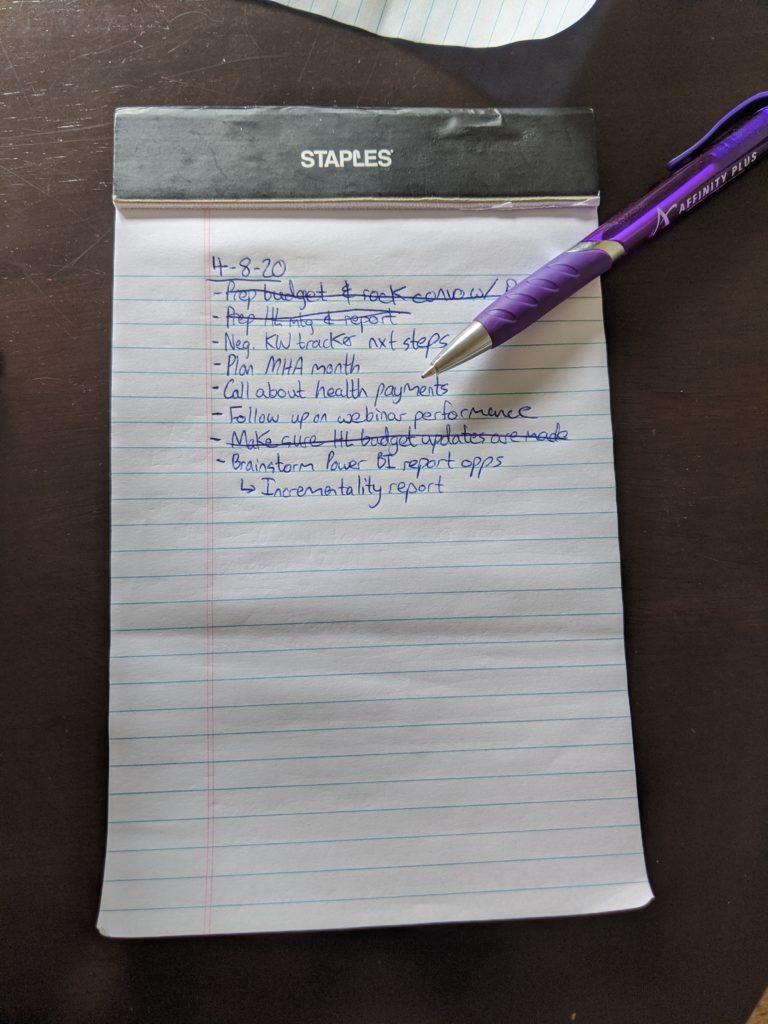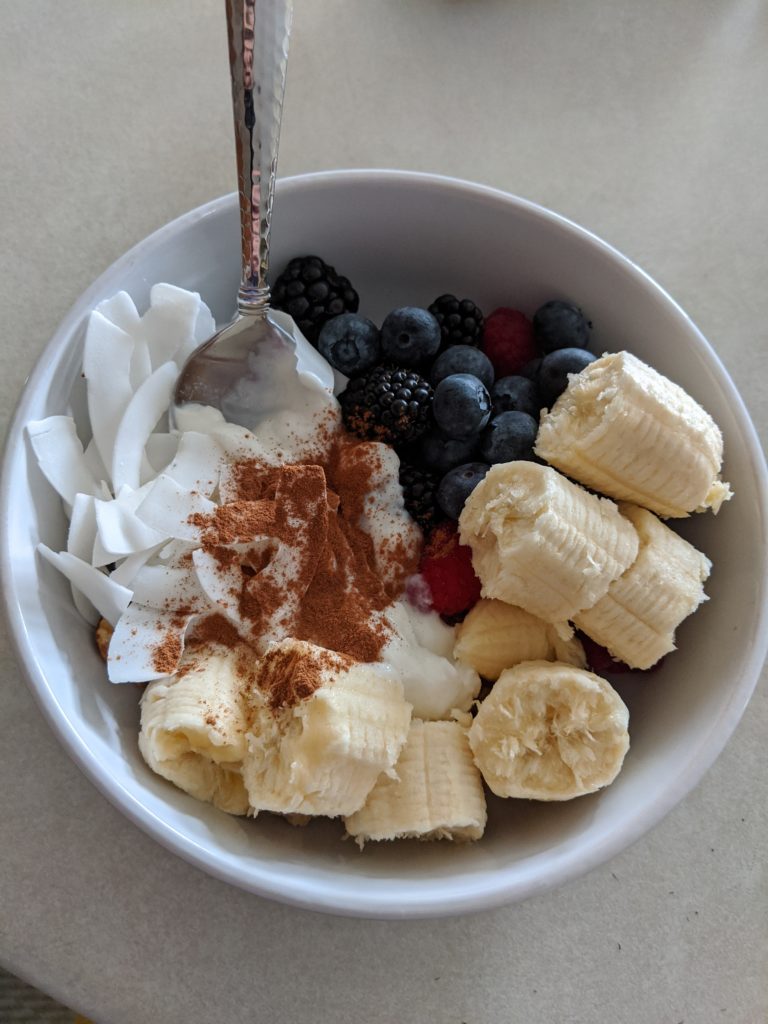How to Avoid Burnout
Covid-19 social distancing measures making you feel burnt out?
You are not alone.
As someone that struggles with anxiety, these last few weeks have been tough. One day the introvert in me is thriving. I cook a three-course meal, go for a run, and work on my personal website. The next day, I am in limbo, staring out the window on a cloudy day and trying to figure out what to do after binge-watching Tiger King and the entire critically acclaimed movie section on Netflix.
With the start of Mental Health Awareness Month and continued social distancing, it is more pertinent than ever to have an open discussion about burnout, especially with the rise of searches for “mental health resources” in Minnesota.
This blog will define burnout, identify its causes, and offer tips on how to reduce burnout.
What is burnout?
Not to be confused with the Burnout video game series or a high school dropout, the burnout I am referring to is defined by the Oxford dictionary as “physical or mental collapse caused by overwork or stress.”
On one end of the spectrum, a significant number of people are losing their jobs and the unemployment estimates are growing, which is a major cause of burnout.
On the other end, health care workers and business owners are feeling burnt out as they are being pushed to their limits to help others and stay open during this unprecedented time.
Then, we have everyone in between, worrying about family members, friends, and job security with the uncertainty ahead.
What are some causes of burnout?
- Poor work-life boundaries – With our increasingly connected world, it can be challenging to set boundaries with clients, co-workers, and, in some cases, the most difficult person, ourselves. Especially during social distancing, work-life boundaries get blurred for those who work from home.
- Toxic work environments – Feeling like your co-workers are out to get you, meeting your goals, and not getting the recognition for your work, feeling underpaid, undervalued, and treated negatively are all factors that create toxic work environments.
- The rapidly changing nature of the 21st century – The way we do our work and technologies we use continuously changes. It’s tough to balance testing new processes and technologies to grow and adapt while following current processes and striving to achieve new goals. For example, teachers have needed to adjust their curriculum for students during the shelter in place through virtual learning.
- Analysis paralysis – Data is the new oil, but it can be overwhelming to manage. Analysis paralysis happens from looking at data for so long that your eyes start crossing. It can be challenging to draw relevant and actionable insights for clients and upper management to make decisions.
- Decision fatigue – As the day goes on, it becomes more and more tiring to make strategic decisions. Decision fatigue leads to reactive, rather than proactive, decision making, like stuffing our faces with a full package of double stuffed Oreos or finishing a family-sized bag of Spicy Nacho Doritos in one sitting – both things I’ve done.
- Notification overload – Emails, calendar invites, group messages, computer updates, and social media notifications coming from our phones, tablets, and laptops shut down the prefrontal cortex that regulates higher-level cognitive functions and puts the body into emergency response mode, which leads to stress.
- Demanding work and unrealistically high expectations – I’ve met many talented people who work in health care, software engineering, digital marketing, and other demanding fields that feel burnt out. These individuals hold themselves to the highest standard and are under a lot of pressure. This high standard allows them to achieve great things but can lead to unrealistically high expectations.
How to avoid burnout during and after social distancing
Take a break from technology and the media.
This could be unplugging over dinner and intentionally focusing your attention on your family or going a full day without using your cell phone, computer, and spending time connecting with yourself, which is something I’ve been trying called a No Tech Day. It helps me control my relationship with technology, rather than technology and the never-ending newsfeed controlling me.
Practice gratitude.
Focus on and be grateful for what you do have, rather than what you don’t.
Enjoy the little things.
My co-workers know Marsha, the neighborhood squirrel, and I are getting through social distancing together. She visits about once a day, either jumping on the AC unit or the tree outside my apartment. I never would’ve known a squirrel was that acrobatic or a good listener until I met Marsha. Enjoy the little things, especially the funny moments nature has to offer.
Know yourself.
Spend time with yourself. This can be challenging at times, but it’s an important part of reflection and knowing what triggers positive or negative thought patterns. For positive thought patterns, did someone give you a compliment, or did you successfully finish a big project at work? For negative thought patterns, was it too many cups of coffee, taking on too many things at once, or not getting a good night’s sleep? Once we understand the way our thought patterns work, it’s easier to be aware and be mindful.
Be adaptable.
Don’t hold on to one set identity of yourself. Each of us has many identities, interests, goals, dreams, emotions, and beliefs. With the increasingly fluid and dynamic world we live in, it’s important to adapt in ambiguous situations, like the one we’re in, and move forward into the unknown.
Sleep.
Getting rest and a good night’s sleep is a pinnacle part of brain development and information recall. I used to have trouble sleeping. For example, I had trouble calming my mind down before bed and would wake up multiple times through the night. I found my sleep issues were coming from drinking too much coffee, looking at my phone before bed, and eating before bed. It’s still a work in progress, but adjusting these things has significantly improved my sleep.
Stay active.
We weren’t meant to sit at a desk all day. It’s important to move around. You don’t have to be an elite athlete or gym rat to put some time aside each day for movement. Find an activity that suits your lifestyle and focus on consistency over intensity. Do the activity at a moderate effort level 3-5 times a week, rather than 100% once a week, and then taking a week-long break because you either hurt yourself or your muscles need to recover.
Learn something new and teach it to others.
Read, write, explore new hobbies, like cooking or dancing, and discover new interests every day. Then, share your knowledge with family, friends, and co-workers.
Set SMART goals on a monthly, quarterly, and yearly basis.
Setting goals can be challenging, especially if priorities keep changing. Align with your team on goals and stick to them. One of my favorite quotes from the Entrepreneurial Operating System is “If everything is important, nothing is important.” The SMART goal structure has helped our team immensely with prioritization and planning. SMART goals are specific, measurable, attainable, relevant, and time-based. All these components will make it easier to visualize and set realistic expectations for your goals.
Build-in tasks and workflows off-screen.
Take a break from your monitor and make a high priority to-do list on a notepad. There’s nothing more satisfying than crossing off an item on your to-do list, okay, except maybe Momo’s sushi.
Establish clear work-life boundaries with clients and co-workers.
When we start answering emails on the weekend or late at night, it sends an unintended signal to clients that you’re available outside work hours. Establish and communicate working hours with your co-workers and clients so it’s clear when you are available.
Practice self-discipline through healthy eating habits.
One of my favorite motivational speakers is Will Smith. He’s not only a talented actor and singer, but I like the way he re-frames and defines self-discipline. In one of his motivational speeches, he says, “We have this belief that self-discipline is taking something away from ourselves and having to resist something we want, but to me, self-discipline is the definition of self-love. Loving yourself means making decisions that are in your own best interest.”
He goes on to talk about our relationship with food and eating habits. For example, making decisions like saying “no” to that delicious cake sitting in the kitchen or drinking that can of Coke at dinner are ways of acting in your own best interest. What are the steps you can take to love yourself?
Recognize teamwork.
One of my favorite parts of the week is going through our Monday morning meeting and having team members share “kudos,” where we recognize individual team members for their above and beyond work. Progress takes time, energy, and perseverance. Kudos are a great way to honor progress and hard work. It reminds team members that we’re moving things forward and making a difference.
Get outside.
Fresh air and some movement are one of the best ways to take your mind off things that stress you out. Even working in 10-20 minute walks during the workday, will help your overall mental well-being. One of my favorite areas to go for walks is by the Stone Arch Bridge. It’s become a daily activity to see if a floating tree is still stuck in the river. Day 29 – still there.
How Augurian creates an environment that reduces burnout
Everything I mentioned above is important, but what makes the most significant impact is having systems in place that create a positive work environment. This includes benefits and perks that promote work-life balance, and the willingness of leadership to have conversations around mental health.
For example, some of our employee benefits include the ability to work remote, bring pets into the office, paid maternity and paternity leave policies, and unlimited PTO. These benefits promote work-life balance and create a culture of trust, which is the foundation of a positive work environment.
In addition to these benefits, leadership’s support of this blog and other initiatives around mental health has been tremendous. For example, this conversation has prompted greater access to mental health resources, including a Health and Wellness folder, access to a free month trial of online counseling through BetterHelp and a reduced rate to continue counseling services after the trial, and connection during social distancing through things like virtual Bingo, Netflix parties, and happy hours.
This May our office is proudly celebrating Mental Health Awareness Month. Each week, we’re going to host speakers and activities to have open conversations about stress and anxiety and how we can create a positive work environment for each other, even during the social distancing measures.
Stay tuned for a May video series on our social media promoting each Augur’s favorite way to prioritize their mental health during social distancing.
Conclusion
Burnout can sneak up on us, especially during a pandemic that leads to social isolation and a lingering worry of what’s to come. It’s important to be open and honest with ourselves and others when it comes to issues around mental health. It’s even more important for companies to take mental health issues seriously.
I hope the tools and ideas in this post can spark more open conversations to reduce the stigma around mental health and increase access to mental health resources for those who are going through tough times, as it is clearly a growing need.
- Paid Media Marketing During a Recession - September 1, 2022
- The Google Ads ETA Sunset is Coming in July – Get Your Accounts Ready - June 2, 2022
- The Top 6 B2B Paid Media Channels to Test in 2022 - April 5, 2022








